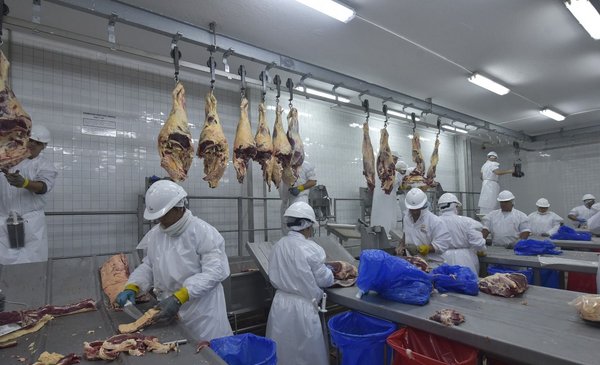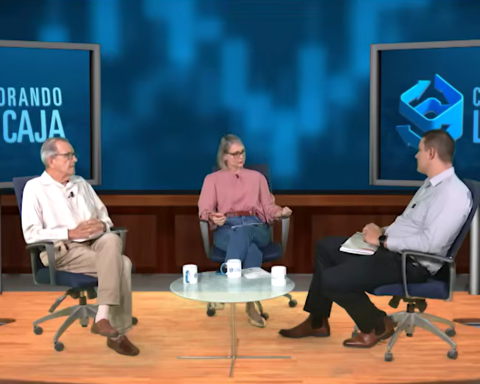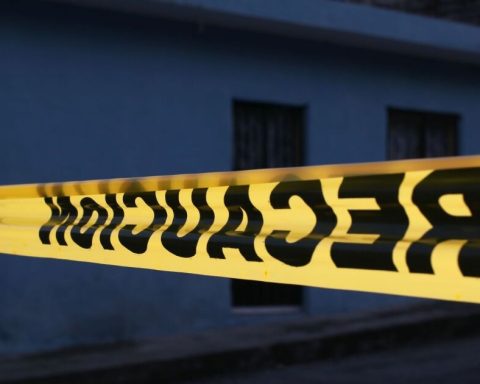In line with what was expected The Uruguayan economy continued its recovery path in the fourth quarter of last year, rebounded and registered an expansion of 4.4% in 2021after the severe shock caused by the pandemic during the previous year when activity registered a sharp drop of 6.1% (revised figure from the previous 5.9%), according to the National Accounts report released this Wednesday by the Central Bank of Uruguay (BCU).
The Gross Domestic Product (GDP) grew 2% in the fourth quarter compared to the third quarter of the year –removing seasonal effects–, while it reached a level 5.9% higher compared to the last quarter of 2020. Also, in the fourth quarter GDP was 2.3% above its value for the same quarter of 2019 prior to the arrival of the pandemic.
The director of Macroeconomic Consulting of the Ministry of Economy and Finance (MEF), Nicole Perelmutersaid to The Observer that the growth of economic activity was in line with projections, as announced by Minister Azucena Arbeleche on February 15.
The government official highlighted that the recovery was widespread among the different sectors of activity, with the commerce, lodging and food and beverage supply sectors and manufacturing industries standing out for their positive impact. “From the perspective of spending, we observe a strong dynamism of investment and exports, accompanied by the growth of household and government consumption,” he said.
Perelmuter added that growth “ratifies” the process of recovery of economic activity, and that the leading indicators of activity indicate that this process would have continued in the first quarter of 2022.
The analysts’ view
The partner of the Exante consultancy, Florencia Carriquiry, told The Observer what in “general terms there were not many surprises”despite the fact that the constant revisions of the previous quarters carried out by the BCU make it necessary to review the data and the “diagnoses” of the different sectors of the Uruguayan economy.
The economist indicated that the growth of the fourth quarter of 2021 was “somewhat more moderate” than that registered during the third (July-September), and highlighted an improvement “perhaps somewhat more pronounced” in some services and consumption in general at the end of 2021.
Carriquiry indicated that last year’s GDP data already leaves a “carryover effect of 3.6%” for 2022. “Probably the 3.7% that we had been anticipating, we may have to move it up a little,” he anticipated. The economist considered that the impact of the war in Russia is leaving a shock, in terms of trade, “which is positive” to the extent that the improvement in export prices is greater than the negative impact left by the rise in oil.
While, The economist Aldo Lema wrote on his Twitter account that “the strong dynamism shown by the Uruguayan economy between the first and fourth quarters of 2021 (+7.4%) generated a high statistical drag (3.6%) for 2022. That would be the growth if GDP remained stagnant all this year at its fourth-quarter level.”
The strong dynamism shown by the Uruguayan economy between the first and fourth quarters of 2021 (+7.4%) generated a high statistical drag (3.6%) for 2022. That would be the growth if the GDP remained stagnant throughout this year at its fourth quarter level. https://t.co/KVlByqwVhC
– Aldo Lema – Uruguay (@AldoLema_uy) March 23, 2022
For its part, the economist of the Center for Development Studies (CED), Ignacio Umpiérrez, told Carve that, for now, it maintains an expansion of 3.3% for the average GDP in 2022, with some adjustments in the internal sectors. The expert commented that “much better than expected agriculture” is being visualized, since good prices are maintained and the country would be facing an upcoming soybean harvest with encouraging results in terms of productivity.
On the other hand, on the negative side, a tourist season stands out “which was much worse” than what had been previously contemplated. “These two factors would leave a neutral effect (on GDP), which is why we maintain 3.3%, which is still good growth,” commented Umpiérrez.
The economist indicated that the main challenge lies in how prop up private consumptionwhich is lagging due to the effects of the pandemic, and which will depend on the level of employment —“which is very good”—, but also on wage levels, which have suffered two consecutive years of loss (2020-2021) .
The key to lower taxes in 2023
The President of the Republic Luis Lacalle Pou got engaged on March 2 in his speech before the General Assembly to reduce next year the Social Security Assistance Tax (IASS), which is levied on the highest pensions, and the Personal Income Tax (IRPF) that pay a third of wage earners, if the economy manages to grow this year at least at the rate of 3.8% that the economic team manages and that today several private analysts do not see as an impossible number to reach.
“We have a firm commitment to comply with what was agreed in the Commitment for the country, to obtain satisfactory results in the economy, to reduce the IASS and to increase the deductions in the lowest income tax brackets in the year 2023”, announced the president. Lacalle Pou in Parliament.
Consumption and exports
Final consumption spending increased 4.9% year-on-year during the fourth quarter, with increases in both household spending (4.5%) and government spending (6%). For its part, gross fixed capital formation (investment) expanded by 9.8% year-on-year.
Meanwhile, exports of goods and services grew 26.3% in year-on-year terms and had a positive impact of 6.1 points, while imports did so by 25.5%.
By sectors of activity
In 2021 there was a growth gAll activities were generalized and the lower mobility restrictions associated with the health emergency, the reopening of borders and the recovery of external demand worldwide were decisive in several cases.
In particular, during the last quarter the industry grew 7.8% year-on-yearwith a positive impact of the refrigeration industry and its exports. While the activities of commerce and accommodation grew 6.6%. Here, the higher sales of clothing, fuel and services stand out, and an improvement in the activity of hotels and restaurants compared to the end of 2020.
the category transport and comunication expanded 8.9%, education and health 5.1%, financial services 6.4%, and professional and leasing activities 10.1%.
For its part, the added value of agriculture increased 3.8% in the year-on-year comparison, due to growth in activities such as the production of rolls for industrial processing, a greater harvest of winter crops and an increase in soybean plantings. Beef cattle also had a positive performance in the last quarter associated with higher levels of slaughter in slaughterhouses and exports of live cattle.
construction had a variation of 0.6% compared to the last quarter of 2020, which is mainly explained by the works of the second UPM pulp mill in Paso de los Toros and the works associated with the Central Railway.
In addition, the greater production of electric power stands out, fundamentally for export to Brazil, which was reflected in a 5.8% growth in electric power, gas and water activities.















